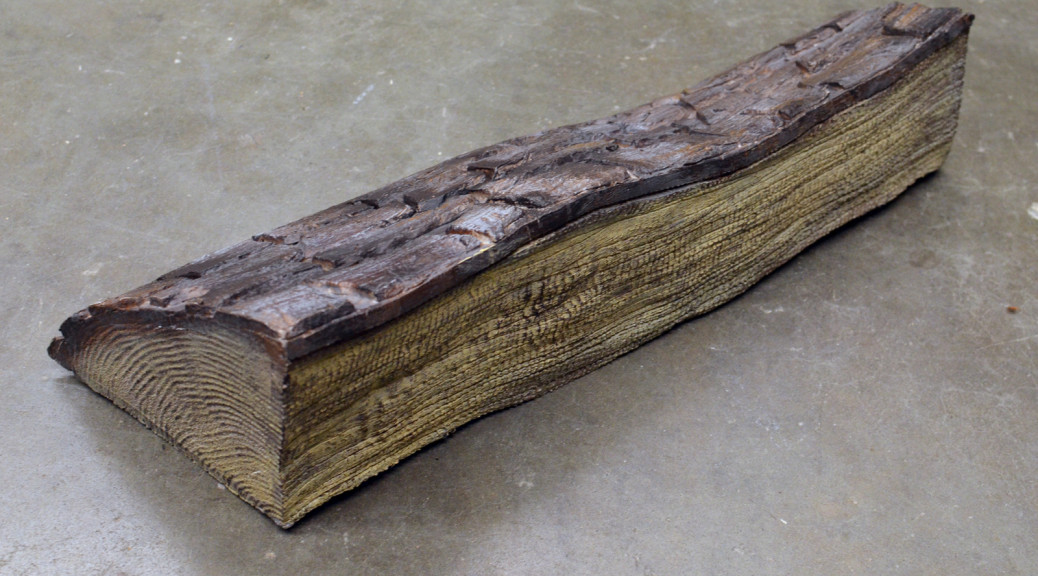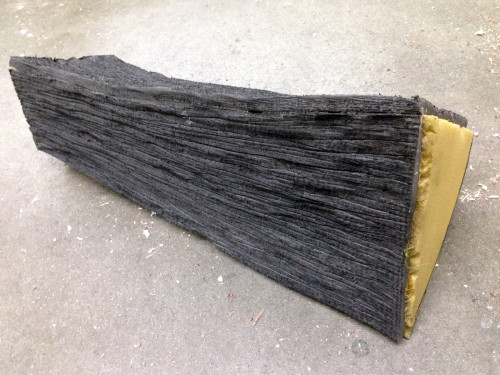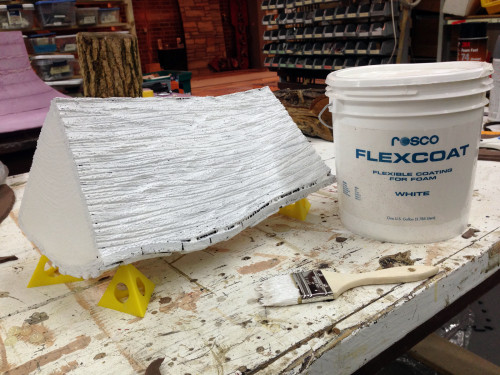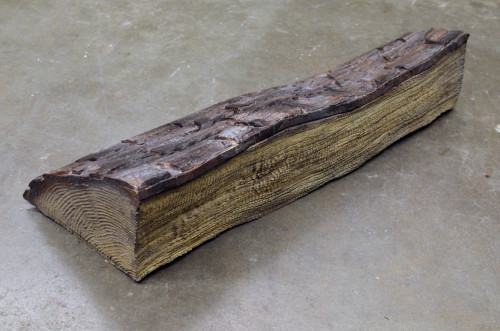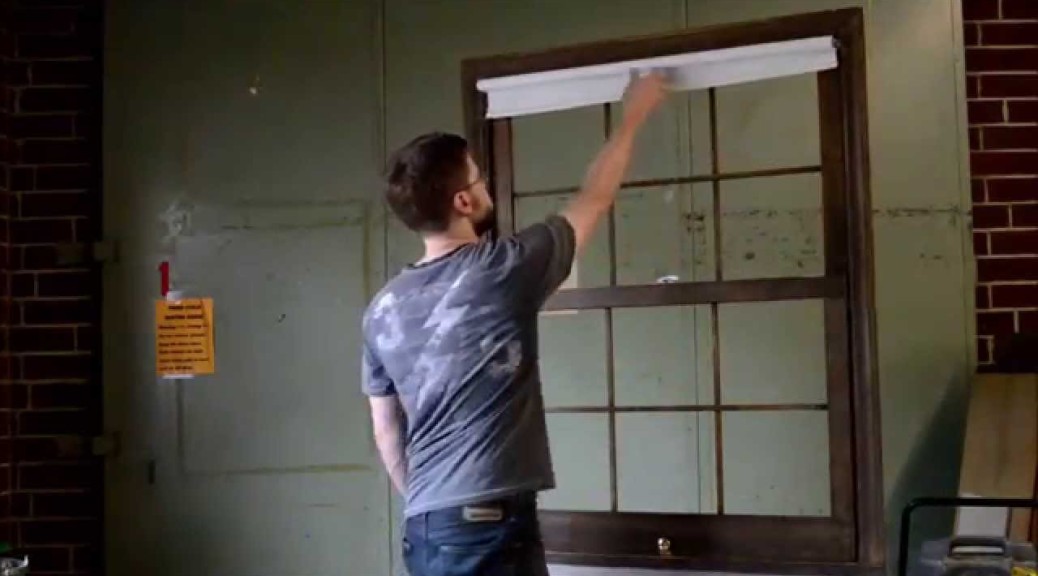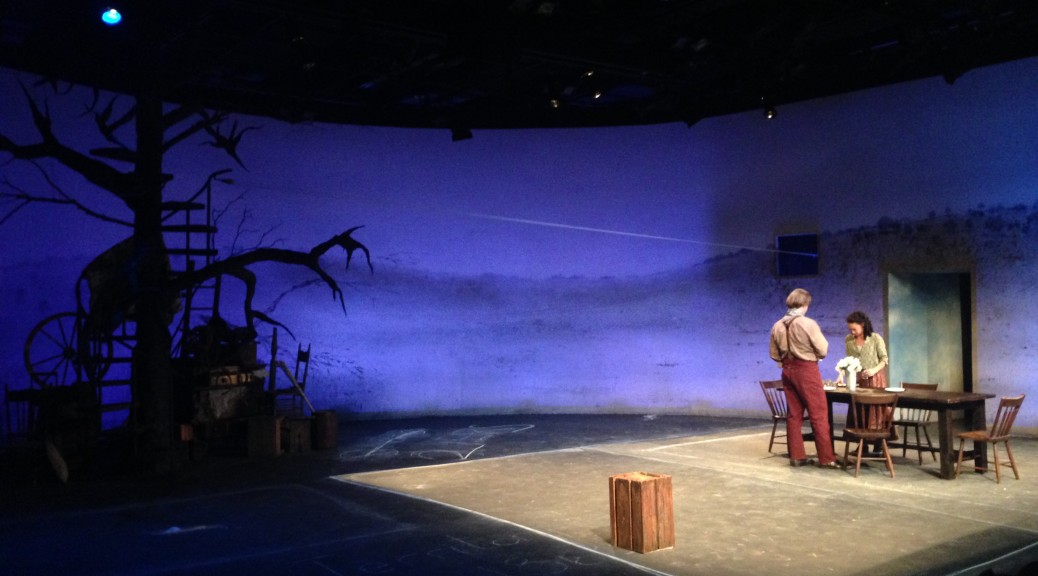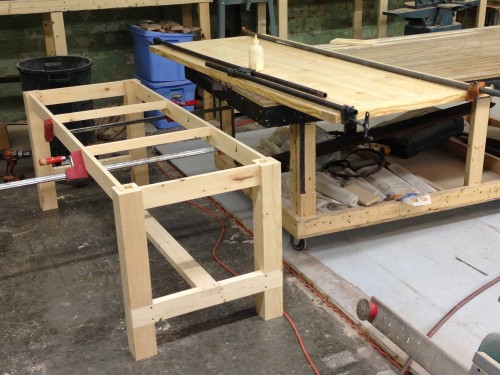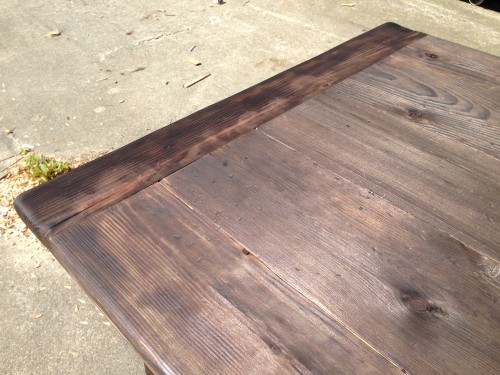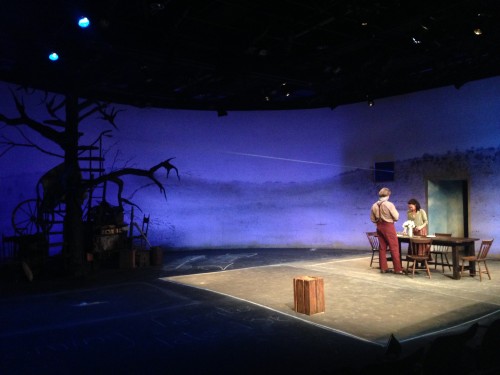Anyone who has done Deathtrap knows that the “wall of weapons” could be a challenge. I was able to source most of what we needed, but the mace was a bit tricky. I had a flail, but when we got to tech, we decided it really needed to be a mace. It is never used, but the characters reference it a few times, and they would know the difference between a flail and a mace. I was pretty much out of money, so I decided to build one with whatever I had laying around while they worked on lighting and sound cues.

I printed out some research of a flanged mace that had a cool look but was not too intricate. The shaft was a length of PVC pipe. I attached a bit of wooden dowel on either end; one for the handle and one for the head. I cut the flanges out of craft foam. I drilled out the center of a few wooden toy wheels to make the various ridges, and a lamp finial finished off the top.

I attached the flanges to the head with some hot glue and sealed it all with some fiberglass resin. I only used one coat, which did not really stiffen the foam, but since it was just a wall-hanger, I figured it was enough. Everything got sprayed with various metallic spray paints before I attached it all together.
For the handle, I wrapped tape around it to give it more of a bulging cigar shape. I wrapped the final layer of tape in a spiral to make it look like a leather-wrapped handle.
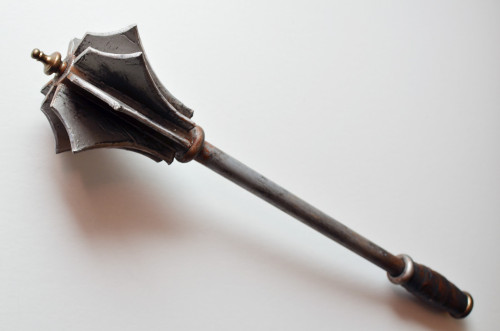
I finished the whole thing off with some weathering and aging using acrylic paints. The end result looked pretty a-mace-ing.


